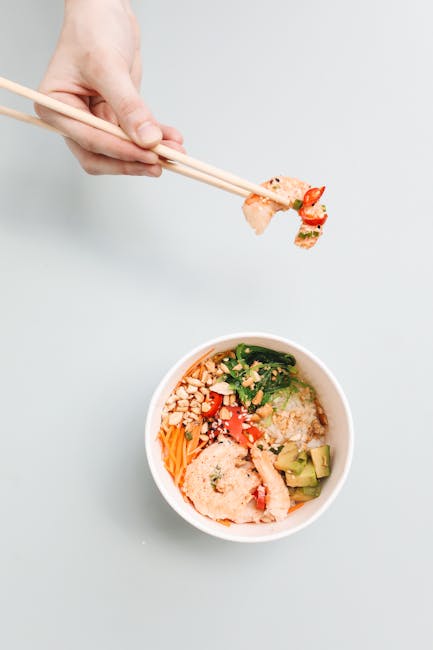Coconut rice, a dish seemingly simple in its composition, boasts a rich and fascinating history interwoven with the cultural tapestry of numerous regions. While pinpointing its precise origin is difficult, its prominence in Southeast Asian cuisines, particularly those of Thailand, the Philippines, and Indonesia, suggests a long and intertwined culinary journey. The use of coconut milk in rice dishes likely emerged independently in various parts of the world where coconut trees thrived, reflecting a resourceful adaptation to readily available ingredients. The creamy texture and subtle sweetness imparted by coconut milk elevate the humble grain, transforming it into a comforting and flavorful staple. Evidence suggests that variations of coconut rice have been prepared for centuries, passed down through generations, subtly evolving with each family’s unique touch.
The cultural significance of coconut rice is undeniable. In many Southeast Asian countries, it’s not just a side dish; it’s a cornerstone of countless celebratory meals and everyday family dinners. It’s often served alongside curries, grilled meats, and other savory dishes, its gentle sweetness acting as a counterpoint to spicier flavors. Considered a symbol of abundance and prosperity in some cultures, its presence on a table often signifies a special occasion. For example, in Filipino cuisine, it’s a staple at weddings and fiestas, a testament to its enduring popularity. Statistics show that coconut is a fundamental ingredient in the diets of billions of people worldwide, and rice, of course, is a global staple food, so the combination is incredibly widespread, though the specific preparations vary greatly.
Beyond its cultural significance, coconut rice offers a compelling nutritional profile. Coconut milk adds healthy fats, particularly medium-chain triglycerides (MCTs), which are known for their potential energy-boosting properties. In addition to this, coconut milk provides essential nutrients like iron and vitamin C. Combined with the carbohydrates and fiber from rice, coconut rice provides a balanced and satisfying meal. However, it’s important to note that portion control is key, as coconut milk can be higher in calories and fat compared to other cooking liquids. Interestingly, different types of coconut milk — from full-fat to light — can dramatically alter the texture and richness of the final dish, offering a range of culinary possibilities for the home cook to explore.
This recipe aims to capture the essence of delicious coconut rice from across various Southeast Asian traditions, while emphasizing ease of preparation and accessibility for the modern kitchen. We’ll focus on achieving that perfect balance of creamy texture, subtle sweetness, and fragrant aroma that defines truly exceptional coconut rice. Get ready to unlock the secrets to creating a dish that’s both historically significant and undeniably delicious.
Ingredients and Measurements
This recipe yields approximately 4 servings of fluffy, delicious coconut rice. Accurate measurements are key to achieving the perfect texture, so please use a kitchen scale for the most precise results. While volume measurements are provided as a guide, weighing your ingredients is strongly recommended, especially for the rice.
Rice: We recommend using medium-grain white rice for this recipe. Its starchiness contributes to the creamy texture that pairs beautifully with coconut milk. You can experiment with other varieties, but keep in mind that the cooking time and final texture may vary. Use 1 cup (190g) of medium-grain white rice. Thoroughly rinse the rice under cold water until the water runs clear. This removes excess starch and helps prevent stickiness.
Coconut Milk: Full-fat coconut milk is essential for richness and creaminess. Light coconut milk will result in a thinner, less flavorful rice. Use 1 ¾ cups (420ml) of full-fat coconut milk. Make sure to use canned coconut milk, not coconut cream (which is the thick, solidified part of the coconut milk found at the top of the can). If your coconut milk has separated, give it a good shake before measuring.
Water: The amount of water is crucial for achieving the perfect consistency. Too little water will result in dry rice, while too much will lead to mushy rice. We use a ratio that balances the liquid from the coconut milk with additional water for optimal cooking. Add 1 cup (240ml) of water to the pot. You can adjust this slightly based on your stovetop and the type of rice you use, but start with this amount.
Salt: Salt enhances the flavor of the coconut rice and balances the sweetness of the coconut milk. Use ½ teaspoon of fine sea salt or to taste. Don’t be afraid to experiment with salt, as your preference may vary. Adding a pinch of sugar can also complement the coconut flavor, if desired. You could add ¼ teaspoon of sugar for a sweeter coconut rice.
Optional additions: To elevate your coconut rice, consider adding some aromatic ingredients. A 1-inch piece of fresh ginger, thinly sliced, adds a subtle warmth. Alternatively, you can use 2-3 smashed kaffir lime leaves for a more pronounced citrusy aroma. A few pandan leaves (tied in a knot) impart a unique fragrant sweetness. Remember to remove these aromatics before serving.
Important Note: Always measure your ingredients accurately. Using a kitchen scale for the rice and liquids will ensure consistent results every time. Adjusting the amount of water may be necessary based on your specific stovetop and the type of rice you are using. Observe the rice as it cooks and adjust accordingly if needed. Don’t overcook the rice, or it will become mushy.
Equipment List
Making the perfect coconut rice requires the right tools. While you might be able to adapt with substitutes, having the correct equipment will significantly improve your cooking experience and the final result. This list details the essential and recommended equipment, along with explanations of their importance.
1. Medium-Sized Saucepan (2-3 quarts): This is your workhorse for cooking the rice. A 2-3 quart saucepan is ideal for making approximately 2-3 cups of cooked coconut rice. Choose a saucepan with a heavy bottom, preferably stainless steel or clad stainless steel. A heavy bottom distributes heat evenly, preventing scorching and ensuring perfectly cooked rice. Avoid using non-stick pans for this recipe, as the coconut milk can sometimes react with the coating.
2. Measuring Cups and Spoons: Accurate measurements are crucial for achieving the perfect consistency. Invest in a set of measuring cups and spoons, preferably those made of stainless steel or durable plastic. Use dry measuring cups for dry ingredients like rice and coconut flakes, and liquid measuring cups for liquids like coconut milk and water. Inaccurate measurements can lead to either mushy or dry rice.
3. Fine-Mesh Sieve or Strainer: This is essential for rinsing the rice before cooking. Rinsing removes excess starch, which can lead to a sticky or gummy texture. A fine-mesh sieve allows for thorough rinsing while preventing the rice from escaping. Rinse the rice under cold running water until the water runs clear. This usually takes 2-3 rinses.
4. Wooden Spoon or Spatula: A wooden spoon or spatula is ideal for stirring the rice during cooking. Avoid using metal utensils, as they can scratch the inside of your saucepan and potentially affect the flavor. A wooden spoon or spatula also helps to gently stir the rice, preventing it from sticking to the bottom of the pan.
5. Lid for Saucepan: A well-fitting lid is essential for trapping steam and ensuring even cooking. A tight-fitting lid helps to create a humid environment, promoting fluffy rice. Ensure your lid is clean and free of any debris before using it.
6. Rice Cooker (Optional but Recommended): While a saucepan works perfectly well, a rice cooker simplifies the process significantly. Rice cookers automatically adjust the cooking time and temperature, minimizing the risk of burning or overcooking. If you frequently make coconut rice, a rice cooker is a worthwhile investment. If using a rice cooker, follow the manufacturer’s instructions carefully. Adjustments may be needed based on your specific rice cooker model and the amount of rice being cooked.
7. Large Bowl (Optional): A large bowl is helpful for fluffing the cooked rice after it has rested. Using a fork or a rice paddle, gently fluff the rice to separate the grains and create a light and airy texture. Allow the rice to rest for 5-10 minutes after cooking before fluffing. This allows the steam to distribute evenly, resulting in perfectly cooked rice.
Having these tools on hand will make preparing this delicious coconut rice recipe a breeze, resulting in a perfectly cooked and flavorful side dish.
Preparation Phase: Washing and Measuring Rice
Before we embark on the delightful journey of creating the best coconut rice, let’s focus on properly preparing the rice. This seemingly simple step significantly impacts the final texture and flavor of your dish. We’ll be using 1 cup of long-grain white rice for this recipe, but feel free to adjust the quantity based on your needs. Remember to always use freshly milled rice for the best results.
The first crucial step is washing the rice. This removes excess starch, which can lead to a gummy or sticky texture. Place the 1 cup of rice into a fine-mesh sieve or a large bowl. Rinse the rice under cold, running water, gently agitating the grains with your hand. You’ll notice the water turning cloudy as the starch washes away. Continue rinsing until the water runs nearly clear, typically 5-7 times. Don’t be afraid to be thorough; this step is essential for achieving perfectly fluffy rice.
Some recipes skip the washing step, but we strongly advise against it, especially when working with long-grain rice. The excess starch can cause the rice to clump together during cooking, resulting in an unpleasant texture. Thorough rinsing ensures each grain cooks evenly, leading to a light and fluffy final product.
Once the rice is sufficiently rinsed, it’s time to measure the rice accurately. For this recipe, we need precisely 1 cup of rinsed rice. Use a standard 1-cup measuring cup, ensuring the rice is level with the top. Avoid packing the rice down, as this will result in an inaccurate measurement and could lead to overcooked or undercooked rice. A slightly uneven surface is perfectly acceptable, just ensure you don’t compress the grains.
After measuring, transfer the rinsed and measured rice to a bowl and set it aside. You’ll be adding this to the coconut milk and water mixture shortly. Accurate measuring is paramount for achieving the perfect rice-to-liquid ratio, ensuring your coconut rice is neither too dry nor too soggy. A little patience in this preliminary stage will be handsomely rewarded with a delicious and perfectly textured final product. Remember, the success of any rice dish starts with proper preparation, and washing and measuring are the cornerstones of that success.
Now that your rice is perfectly prepared, we can move on to the next exciting step in creating our delicious coconut rice! Stay tuned for the next section for detailed instructions on combining the rice with the flavorful coconut milk and water mixture.
Cooking Techniques: Simmering the Coconut Rice
Simmering is the key to achieving perfectly cooked coconut rice—fluffy, fragrant, and not at all mushy. This technique gently cooks the rice in coconut milk, allowing it to absorb the liquid evenly and develop a creamy texture. We’ll be using a 1:1.5 ratio of rice to liquid, meaning for every 1 cup of rice, you’ll use 1.5 cups of coconut milk and water combined.
Choosing your rice: While you can use any medium-grain rice, jasmine rice or Thai fragrant rice are ideal for coconut rice. Their slightly sticky nature complements the creamy coconut milk beautifully. Avoid long-grain rice, as it tends to become dry and crumbly when cooked this way.
Ingredients (for 4 servings):
- 1 cup medium-grain rice (jasmine or Thai fragrant recommended)
- 1 ½ cups full-fat coconut milk (canned is best)
- ½ cup water
- ½ teaspoon salt (or to taste)
- 1 tablespoon unsalted butter (optional, for extra richness)
Instructions:
1. Rinse the rice: Rinse the rice under cold water until the water runs clear. This removes excess starch and helps prevent the rice from becoming sticky.
2. Combine ingredients: In a medium saucepan, combine the rinsed rice, coconut milk, water, salt, and butter (if using). Stir well to ensure the rice is evenly coated.
3. Bring to a boil: Place the saucepan over medium-high heat. Bring the mixture to a rolling boil. This step is crucial for properly gelatinizing the starch in the rice.
4. Reduce heat and simmer: Once boiling, immediately reduce the heat to the lowest setting possible. Cover the saucepan tightly with a lid. Simmer gently for 18-20 minutes, or until all the liquid is absorbed and the rice is tender. Do not lift the lid during this time, as this will release steam and disrupt the cooking process.
5. Rest and fluff: Once cooked, remove the saucepan from the heat and let it stand, covered, for 5-10 minutes. This allows the rice to steam and finish cooking evenly. After resting, fluff the rice gently with a fork before serving. Avoid over-fluffing, as this can break the rice grains.
Troubleshooting:
Rice is too dry: If the rice is dry after the simmering time, you may have used too little liquid or your heat was too high. Next time, add a little more liquid (start with ¼ cup) or lower your heat.
Rice is too sticky/mushy: This usually means the rice was overcooked or you didn’t rinse it properly. Ensure you rinse the rice thoroughly and follow the simmering time carefully.
Professional tip: For extra flavour, add a pandan leaf or a few kaffir lime leaves during the simmering process. Remove them before serving.
Enjoy your perfectly simmered coconut rice! It’s delicious as a side dish, or as a base for curries and other savory dishes.
Cooking Techniques: Achieving the Right Consistency
Achieving the perfect consistency for coconut rice is crucial to its deliciousness. Too dry, and it’s crumbly and unappetizing; too wet, and it’s mushy and lacks texture. This section will guide you through the techniques to ensure your coconut rice is fluffy, fragrant, and perfectly moist.
The Ratio is Key: The foundation of perfect coconut rice lies in the precise ratio of coconut milk to rice. For this recipe, we recommend using 1 cup of long-grain white rice to 1 ¾ cups of full-fat coconut milk. Using less coconut milk will result in drier rice, while using more will lead to a wetter, potentially mushy outcome. Experiment slightly once you’re comfortable with the base recipe, but starting with this ratio is highly recommended.
Rinsing the Rice: Before cooking, thoroughly rinse the rice under cold running water until the water runs clear. This removes excess starch, preventing stickiness and ensuring individual grains remain separate. Don’t skip this step! It’s a simple yet crucial step for achieving fluffy rice.
The Absorption Method: We’ll be using the absorption method, which involves combining all ingredients in a pot and letting the rice cook in its own liquid. This method is less hands-on than other methods, and results in consistently moist rice. In a medium-sized saucepan, combine the rinsed 1 cup of rice and 1 ¾ cups of full-fat coconut milk. Add a pinch of salt (about ¼ teaspoon) to enhance the flavor. You can also add a bay leaf or a pandan leaf at this stage for extra aroma, removing them before serving.
Bringing it to a Boil: Bring the mixture to a rolling boil over medium-high heat. This initial boil is important for even cooking. Once boiling, reduce the heat to the lowest setting, cover the pot tightly with a lid, and simmer for approximately 18-20 minutes, or until all the liquid is absorbed. Do not lift the lid during this simmering process; this will allow steam to escape, resulting in drier rice.
The Fluff Test: After 18-20 minutes, carefully remove the pot from the heat. Let it sit, covered, for another 5-10 minutes. This allows the rice to steam and finish cooking. After this resting period, gently fluff the rice with a fork. If it’s still too wet, let it sit uncovered for a few more minutes. If it’s too dry, next time reduce the simmering time slightly. The goal is fluffy, separate grains with a slight sheen from the coconut milk.
Troubleshooting: If your coconut rice is consistently too dry, increase the amount of coconut milk by ¼ cup next time. If it’s consistently too wet, reduce the amount of coconut milk by a similar amount. The type of rice can also affect the final consistency, so if you are using a different type of rice, you may need to adjust the liquid accordingly. Always taste and adjust as needed to perfect your coconut rice recipe.
By following these techniques and paying attention to the details, you’ll consistently achieve perfectly cooked coconut rice, a delightful accompaniment to any meal.
Flavor Enhancements: Adding Spices and Sweeteners (Optional)
While the basic coconut rice recipe is delicious on its own, adding spices and sweeteners can elevate it to a whole new level, transforming it from a simple side dish to a complex and flavorful experience. This section explores optional additions to customize your coconut rice to your taste preferences.
Spices: A small amount of spice can go a long way in enhancing the coconut flavor profile. Experimenting with different spices allows you to create unique and exciting variations. Here are a few suggestions:
Cinnamon: A classic pairing with coconut, cinnamon adds warmth and a touch of sweetness. Start with 1/2 teaspoon of ground cinnamon per cup of rice. Add it along with the other ingredients before cooking for a subtle infusion, or sprinkle it on top after cooking for a more pronounced flavor.
Cardamom: This aromatic spice complements coconut beautifully, adding a subtle floral and slightly peppery note. Use 1/4 to 1/2 teaspoon of ground cardamom per cup of rice. Similar to cinnamon, you can add it during cooking or as a garnish.
Ginger: Fresh ginger adds a vibrant and zesty kick. Grate about 1 teaspoon of fresh ginger per cup of rice and add it during cooking. Note: Be mindful not to overpower the coconut flavor; start with a smaller amount and adjust to your taste.
Nutmeg: A pinch of freshly grated nutmeg (about 1/8 teaspoon per cup of rice) adds a warm, slightly sweet, and nutty flavor that blends well with coconut. Add it during the last few minutes of cooking to preserve its delicate aroma.
Turmeric: For a vibrant yellow hue and an earthy flavor, add a pinch of turmeric (about 1/4 teaspoon per cup of rice). Caution: Turmeric can stain, so be careful when handling it.
Sweeteners: Sweeteners can balance the savory notes of the coconut milk and create a delightful dessert-like rice. However, use sweeteners sparingly, as too much can overpower the delicate coconut flavor.
Brown Sugar: A tablespoon of brown sugar per cup of rice adds a subtle caramel-like sweetness. Add it along with the coconut milk and water.
Coconut Sugar: For a more natural sweetness that complements the coconut flavor, use coconut sugar. Start with 1 tablespoon per cup of rice and adjust to your preference. Note: Coconut sugar may slightly alter the texture of the rice.
Maple Syrup: A teaspoon or two of maple syrup per cup of rice adds a delicate sweetness and a unique flavor profile. Add it towards the end of the cooking time to avoid burning.
Important Considerations: When adding spices and sweeteners, always start with small amounts and taste as you go. You can always add more, but you can’t take it away. Adjust the quantities based on your personal preferences and the intensity of the spices and sweeteners you are using. Remember to consider the overall balance of flavors in your dish.
Recommendations for the Best Coconut Rice Recipe
This recipe delivers a deliciously fragrant and creamy coconut rice, perfect as a side dish or a base for various cuisines. To achieve the best results and maximize enjoyment, follow these recommendations.
Serving Suggestions: This versatile coconut rice pairs beautifully with a wide array of dishes. It’s a fantastic accompaniment to curries, both mild and spicy, adding a touch of sweetness and richness to balance the savory flavors. Consider serving it alongside grilled or roasted meats like chicken, fish, or tofu. Its subtle sweetness also makes it a wonderful pairing for dishes with strong umami notes, such as stir-fries with soy sauce or mushrooms. For a truly indulgent meal, try it with shrimp scampi or a flavorful coconut-based stew. For a lighter meal, it complements grilled vegetables and lean proteins perfectly.
Storage Conditions: For optimal freshness and flavor, store leftover coconut rice in an airtight container in the refrigerator. It should be consumed within 3-4 days. To reheat, gently microwave or steam the rice until heated through, adding a splash of water or coconut milk if it seems dry. Avoid reheating repeatedly, as this can affect the texture and flavor.
Complementary Dishes: The possibilities are endless! Consider these complementary dishes to enhance your coconut rice experience:
- Thai Green Curry: The creamy coconut rice perfectly absorbs the vibrant flavors of the curry.
- Jerk Chicken or Fish: The sweetness of the rice contrasts beautifully with the spicy jerk seasoning.
- Roasted Vegetables: Roasted sweet potatoes, broccoli, or Brussels sprouts add a healthy and flavorful element to the meal.
- Black Beans and Corn Salsa: A refreshing and vibrant topping that adds texture and acidity.
- Grilled Pineapple: The sweetness of grilled pineapple complements the coconut flavor beautifully.
Nutritional Information (per serving, approximate): The exact nutritional information will vary depending on the specific ingredients and quantities used. However, a typical serving of coconut rice (approximately ½ cup cooked) will contain approximately:
- Calories: 200-250
- Carbohydrates: 40-50g
- Fat: 5-10g (mostly healthy fats from coconut milk)
- Protein: 2-4g
Note: This is an estimate and can vary based on the type of rice and coconut milk used. For precise nutritional information, use a nutrition calculator with your specific recipe ingredients.
Important Considerations: For a richer flavor, use full-fat coconut milk. Adjust the amount of coconut milk to your preference; some people prefer a drier rice, while others prefer a creamier texture. Don’t overcook the rice, as this can result in a mushy consistency. Experiment with different types of rice – jasmine rice and basmati rice both work well. Finally, don’t be afraid to add your own personal touch – a squeeze of lime juice, a sprinkle of toasted coconut flakes, or a pinch of salt can elevate the flavor profile.




